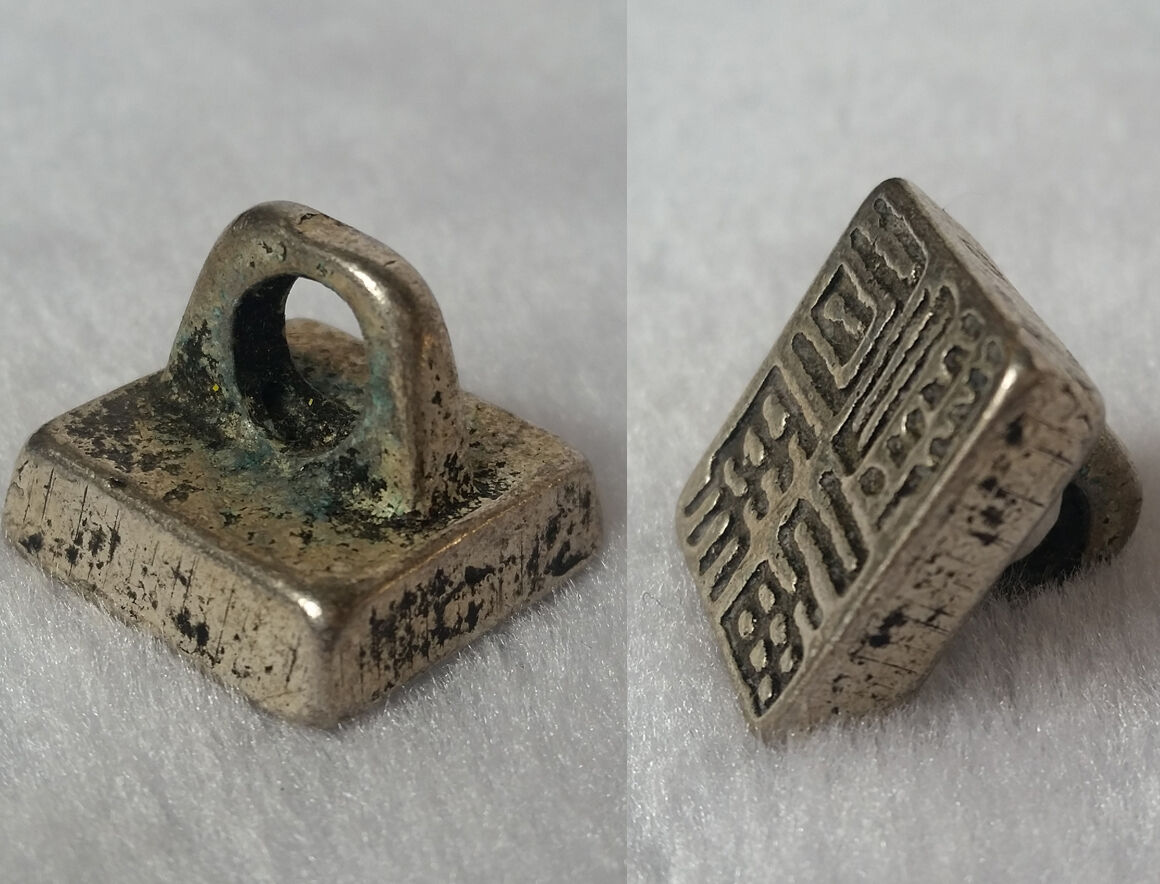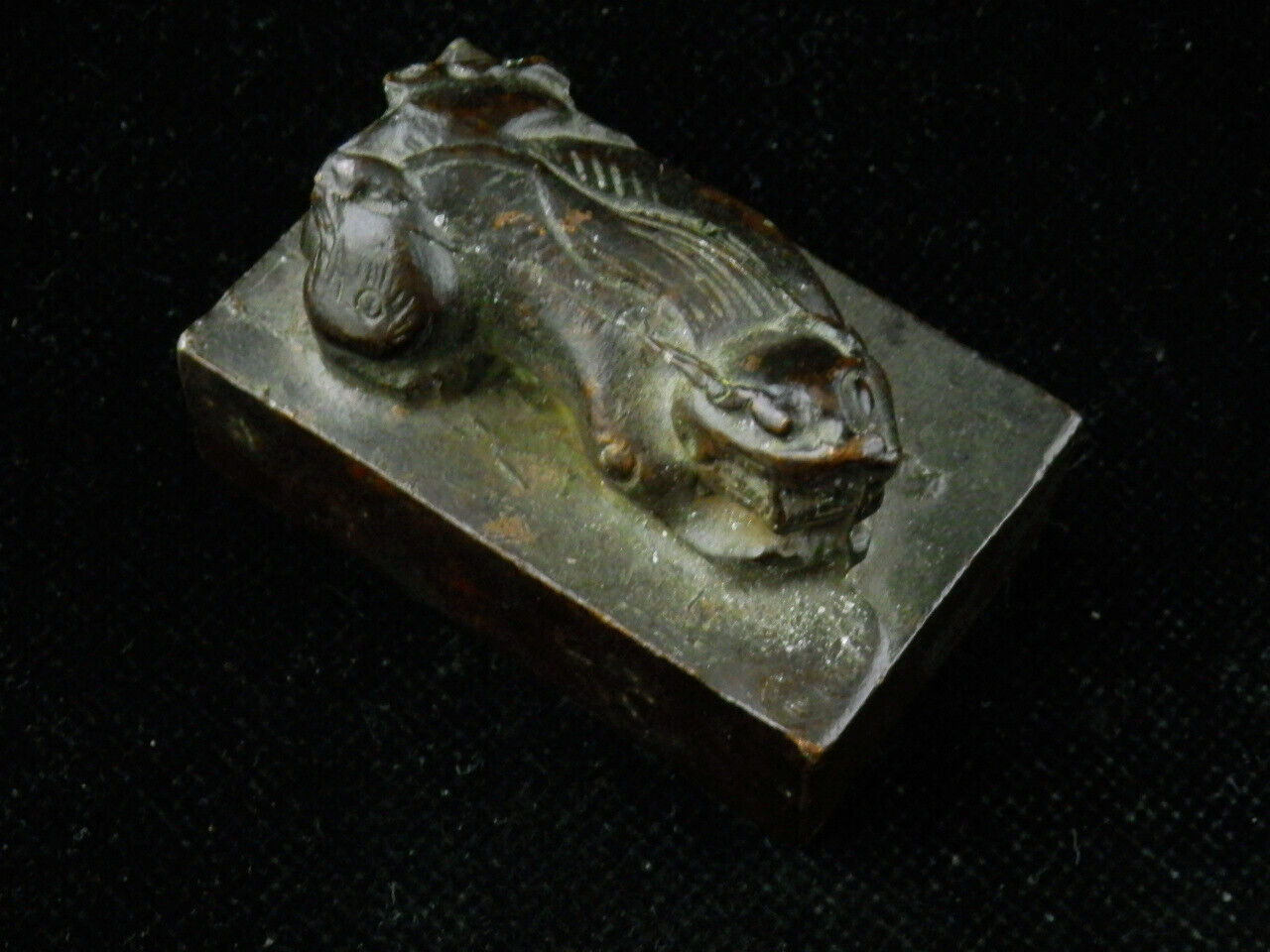-40%
Antique Master Quality Handmade Iron Tibetan Vajra, Dorji, Nepal
$ 184.8
- Description
- Size Guide
Description
This is very beautiful master quality handmade Iron Tantrik tibetan vajra or Dorji. size ;- 6.5 inchFrom Wikipedia, the free encyclopedia
Vajra (Devanagari: वज्र) is a Sanskrit word meaning both thunderbolt and diamond and is a ritual tool or spiritual implement which is symbolically important to both Buddhism and Hinduism, but is particularly important in Buddhism.
The equivalent word in Tibetan is dorje (Wylie: rdo-rje; ZWPY: dojê), which is also a common male name in Tibet and Bhutan. Dorje can also refer to a small sceptre held in the right hand by Tibetan lamas during religious ceremonies.
The vajra destroys all kinds of ignorance, and itself is indestructible. In tantric rituals the Vajra symbolizes the male principle which represents method in the right hand and the Bell symbolizes the female principle, which is held in the left. Their interaction leads to enlightenment. Also the Dorje or Vajra represents the "Upaya" or method Tibetans name Vajra as "Dorje". When made to be worn as a pendant, it reminds the wearer, and the viewer, of the supreme indestructibility of knowledge.
In Buddhism the vajra is the symbol of Vajrayana, one of the three major branches of Buddhism. Vajrayana is translated as "Thunderbolt Way" or "Diamond Way" and can imply the thunderbolt experience of Buddhist enlightenment or bodhi and also implies indestructibility, just as diamonds are harder than other gemstones.
In the tantric traditions of both Buddhism and Hinduism, the vajra is a symbol for the nature of reality, or sunyata, indicating endless creativity, potency, and skillful activity. The term is employed extensively in tantric literature: the term for the spiritual teacher is the vajracarya; instead of bodhisattva, we have vajrasattva, and so on. The practice of prefixing terms, names, places, and so on by vajra represents the conscious attempt to recognize the transcendental aspect of all phenomena; it became part of the process of "sacramentalizing" the activities of the spiritual practitioner and encouraged him to engage all his psychophysical energies in the spiritual life.
An instrument symbolizing vajra is also extensively used in the rituals of the tantra. It consists of a spherical central section, with two symmetrical sets of five prongs, which arc out from lotus blooms on either side of the sphere and come to a point at two points equidistant from the centre, thus giving it the appearance of a "diamond sceptre", which is how the term is sometimes translated.
Various figures in Tantric iconography are represented holding or wielding the vajra. Three of the most famous of these are Vajrasattva, Vajrapani, and Padmasambhava. Vajrasattva (lit. vajra-being) holds the vajra, in his right hand, to his heart. The figure of the Wrathful Vajrapani (lit. vajra in the hand) brandishes the vajra, in his right hand, above his head. Padmasambhava holds the vajra above his right knee in his right hand.
In Hindu mythology vajra is a powerful weapon having the combined features of sword, mace, and spear. It was created out of hard bones of sage Dadhichi who gave up his life willingly for a noble cause so that his spine could be used to build the weapon to be used for a noble cause. This was the weapon Lord Indra used to kill Vitrasur who had conquered heaven and terrorized gods. Due to this supreme sacrifice sage Dadhichi became a legend.
shipping by aramex, will take one week to deliver any where in the world. 20 % less in every 2nd combine purchase on total shipping charge.




















